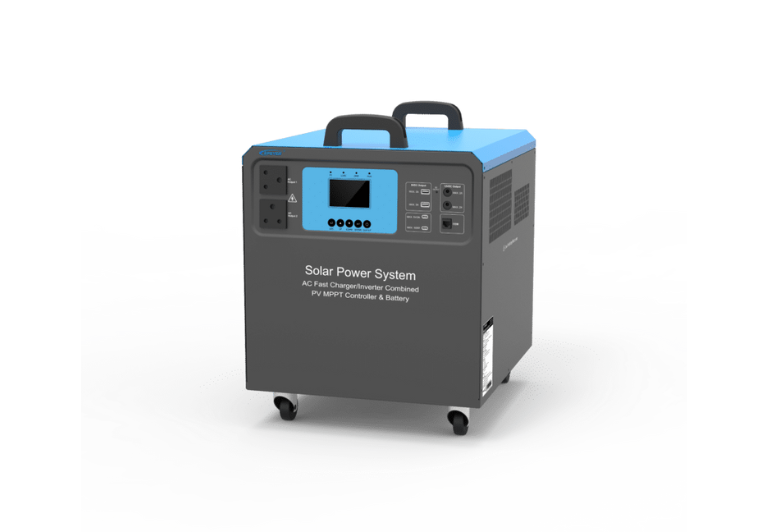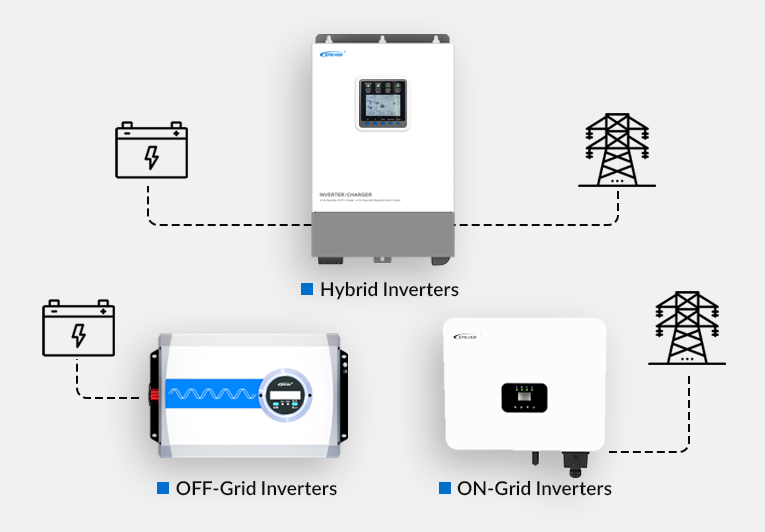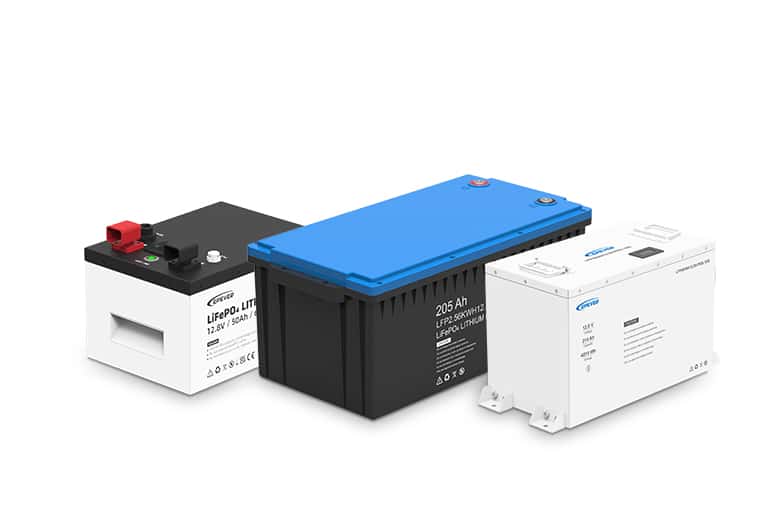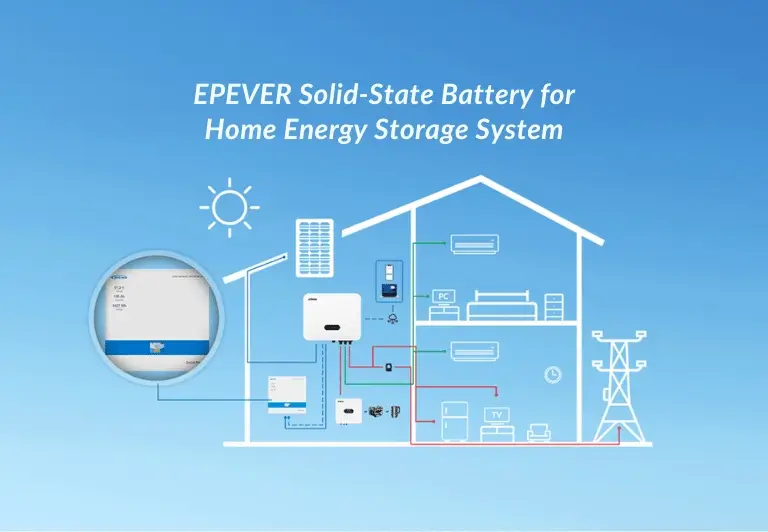A Comprehensive Guide to the HPS-AL Solar Power System
- 23 January 2024
- 1799 views
- No Comments
A Comprehensive Guide to the HPS-AL Solar Power System
Introduction:
The HPS-AL series presents fully standalone solar power systems equipped with long-lasting gel batteries.
These series provide an all-encompassing off-grid energy solution that includes two AC outputs and multiple DC outputs.
HPS-AL allows charging from various sources such as solar panels, utilities, and external power generators, and also handle inverter output and energy management. Furthermore, the system seamlessly switches to inverter power mode within 10ms during sudden power outages while on bypass power mode, ensuring continuous power supply.
Enhanced with built-in Bluetooth technology, it can also be upgraded with WiFi and 4G modules, providing remote monitoring via the EPEVER app.

Key Features:
- The HPS-AL includes an in-built Maximum Power Point Tracking (MPPT) solar controller, which offers a tracking efficiency of over 99.5%. This feature optimizes power intake from solar panels, thereby increasing solar energy usage.
- The system’s use of Sinusoidal Pulse Width Modulation (SPWM) technology delivers a pure sine wave output with a Total Harmonic Distortion (THD) of ≤3%. This advanced technology aids in the conversion of DC voltage into high-quality AC voltage, producing a pure sine wave. This feature diminishes harmonics and interference, making it suitable for a variety of AC loads, including household appliances, industrial equipment, power tools, and audio-visual electronics.
- The HPS-AL offers multiple DC output interfaces, including 5V/3A USB-A2, 5V/3A USB-C1, 12V/2A*2, and 100W USB-C (TypeC)*1. These interfaces provide a direct power source to DC devices like mobile phones, tablets, and laptops.
- The HPS-AL operates on a low-frequency transformer isolated topology, ensuring safety, stability, and robust resistance to impacts. The transformer effectively handles surge currents produced during operation thanks to its superior insulation performance and protective measures.
- To guarantee safe and dependable operation, the HPS-AL comes with several electronic protection functions, including short circuit protection, overload protection, and over-temperature protection.
- The HPS-AL is equipped with a standard Modbus communication interface, enabling user expansion applications.
- This product offers various operating modes to cater to different user power supply needs, thus allowing users to choose the application form of energy based on their requirements, maximizing solar energy use and using grid power as a supplementary source.
- Moreover, the HPS-AL features an efficient design, integrating a dual structure comprising a heat dissipation compartment and a clean compartment. Vital components such as the PCB are placed within the clean compartment, segregating them from the ventilated heat dissipation area. This innovative design prevents dust accumulation directly on sensitive components, averting issues like corrosion and insulation damage, which ensures the HPS-AL’s consistent and stable operation under severe conditions.
- Additionally, the HPS-AL comes with a 128*64 dot matrix LCD screen, offering a clear and user-friendly display of system information.
Advantages:
A standout feature of the HPS-AL series is its capability to reverse the inverter operation for grid/utility charging, permitting an impressive charging current of up to 30A, based on the battery’s capacity. This feature stands in contrast to traditional systems which often use separate charging modules, providing a maximum charging current of merely 10A. The HPS-AL series’ unique bidirectional design facilitates both inverting and reverse charging, enabling a superior charging current at no extra cost. This is especially significant as many market products rely on separate charging modules, typically delivering a lower charging current of around 10A.
Another essential feature of the HPS-AL series is the combined integration of the MPPT controller with the inverter charger. The MPPT controller increases energy efficiency by actively tracking the maximum power point of the solar panels in real-time and adjusting output voltage and current to maximize power output. The MPPT controller offers several benefits:
- System Optimization: The MPPT controller and inverter charger work synergistically, allowing the system to adjust its output in response to varying conditions and battery status. This alignment optimizes the inverter’s input needs and ensures the maximum efficiency of the photovoltaic (PV) system.
- Protective Features: The integrated MPPT controller and inverter provide a range of protective measures, such as overload, short circuit, overvoltage, and low voltage protection, thereby enhancing the safety and reliability of the PV system.
- Additionally, the HPS-AL series includes a DC output port compatible with 100W USB-C (TypeC), ideal for quick computer charging. The USB-C interface, with its reversible connector design, surpasses the older USB-A ports found on traditional devices, which use a one-way, rectangular connector. The multifunctional USB-C port facilitates various functions such as charging and data transfer and is compatible with a wide range of devices including smartphones, computers, and tablets.
- Lastly, the HPS-AL series integrates a Power Factor Correction (PFC) function to optimize the power factor, a key element in enhancing circuit and system efficiency, reducing energy wastage, and minimizing the stress on the power grid. Without control rectification technology, products may show a significant phase difference between current and voltage, leading to energy wastage and increased load on the power grid.
Understanding the Naming Conventions
Here we illustrate the naming conventions by using one model as an example.

Breakdown of HPS-AL Components
- For the purpose of this discussion, the model HPS1522-AL0210 serves as a reference. For detailed insights or information about different models, please refer to the relevant manual.
- AC Outlet: Capable of powering a multitude of devices, such as smartphones, laptops, tablets, household appliances and other electronics, this outlet provides the needed energy.
- LCD Display: Featuring a user-friendly screen, system parameters can be easily adjusted and monitored by users.
- RS485 Communication Port: This interface enables local Modbus and remote system supervision by integrating optional 4G and WiFi modules, facilitating a seamless and remote user experience.
- Type C Port: Offering power solutions for a wide range of devices like smartphones, tablets, laptops, and cameras, this port promotes versatility.
- 5V/3A Output Port: Specifically engineered for DC power delivery, this port accommodates various appliances and devices that need a direct current power supply.
- DC Output Indicator: This useful element illuminates when a DC power connection is active, offering real-time status updates.
- 12V/2A Output Port: Customized for a 12V DC load connection, this port provides power to devices running on this particular voltage.
- Battery Circuit Breaker: Crafted to guarantee safe battery operation, this feature instantly trips open in the event of overcurrent or short circuit situations, offering immediate system and battery protection.
- PV Input Circuit Breaker: This configuration accepts solar energy input from PV panels, offering an automatic protective feature against overcurrent or surges, thereby preserving the entire system.
- Grounding Terminal: to enhance the operation safety.
- AC Input Overload Relay: This relay acts as a shield against excessive current, automatically disconnecting during such events.
- AC Input Port: This interface links the inverter charger with utility power or a generator, permitting AC power input from these sources and guaranteeing a consistent power supply.
- Extension Battery Terminal: This terminal is available for battery expansion or substitution, offering added flexibility. For detailed guidance, please consult the manual.


Setting up the solar system connection
Before starting with the connection procedure, it’s important to comprehend the correct wiring sequence.
The suggested order is as follows:
“Ground > Load > PV Array > Grid or Generator > Optional Accessories.”
When disassembling the system, merely reverse the process. For an extensive guide on executing the connections, please consult the manual.
Now, let’s examine each step involved in the wiring process, starting with grounding.
Grounding: It’s paramount that the grounding terminal is appropriately grounded. Strive to position the grounding point as close as possible to the HPS-AL.

Load Connection: The AC output generates a high voltage. Throughout the wiring process, keep the circuit breaker open, and ensure proper connection of the component terminals. Choose your AC equipment based on the energy storage power supply’s continuous output power. Confirm that the peak power of the AC equipment does not surpass the maximum instant peak power that the energy storage power supply can provide to avoid potential harm.

PV Modules Connection: PV modules yield high voltage. While wiring, keep the circuit breaker open and correctly link the “+” and “-” terminals of each component.

Utility or Generator Connection: During wiring, maintain the circuit breaker or fast-blow fuse in the open state. Verify the correct connection of all component terminals.

Optional Accessories Connections:
A. Communication Module Connection: Link the Wi-Fi or 4G module to the RS485 communication interface of the energy storage power supply.
Note: the 4G module requires an external power supply. This connection enables remote monitoring or adjustment of energy storage power supply parameters via a mobile app. For specific setup procedures, refer to the user manual of the respective module.

B. Phone/Computer Connection: Utilize the 5V/3A power supply interface and Type C power supply interface to charge phones, tablets, and laptops.

C. Expansion Battery Connection: Keep the circuit breaker open during wiring and correctly connect the “+” and “-” terminals. The expansion battery side should be equipped with a circuit breaker. Parallel connect the expansion battery with the internal battery, only if they share the same voltage.

HPS-AL Use Case
The HPS-AL is primarily engineered to function in areas where the power supply is either deficient or non-existent, adapt to meet a range of electrical needs. This mobile power station enables you to fully harness the power of solar energy.
Let’s explore two distinct applications of this product, illustrating its seamless integration with various day-to-day appliances, along with their daily power consumption.
Scenario 1: Camper Van Adventure
The HPS-AL can supply reliable and renewable power for multiple uses in a camper van setting, thereby enhancing your camping experience:
Lighting: With an estimated power consumption of 10-15W, the HPS-AL can keep your camper van lit for hours post-dusk.
Laptop: Be it work or leisure, a laptop, consuming roughly 50W, can stay powered, keeping you connected and entertained on your journey.
Mobile Phones/Tablets: With a power requirement of around 5-10W, your devices for communication and navigation can remain charged.
Portable Fridge: Maintains your food fresh and beverages chilled at an average power usage of 50-70W.
Cooking Equipment: Small electric grill or portable cooktop consuming about 100-150W.
Electric Heater: Crucial for cold nights, using around 750-1500W.
RV Water Pump: Necessary for running water in your camper van, usually drawing about 50-100W.
The HPS-AL allows you to operate these devices, appliances, and amenities even in the remotest of locations.
Scenario 2: Rural House
In a rural house environment, the HPS-AL can serve as a crucial power source, supporting various household appliances:
Lighting: Lighting fixtures, consuming between 10-60W, offer essential illumination for the home.
Television: Providing entertainment and news, a TV generally uses around 20-100W.
Refrigerator: Key for food preservation, a refrigerator typically uses about 100-400W.
Fans: Delivering needed ventilation and cooling, consuming about 25-75W.
Radio: Providing news, weather updates, and entertainment, a radio uses about 5-20W.
Mobile Phones/Tablets: Critical communication devices, requiring about 5-10W.
Small kitchen appliances: Blender, toaster, kettle, with an average power consumption of 300-1200W.
By utilizing the HPS-AL, even the remotest homes can experience the conveniences of modern-day amenities.
Note: These are estimates of the power usage of individual appliances. The actual consumption may vary based on the model and usage of the appliance.
Schematic diagrams of connections in HPS-AL series
The HPS-AL is capable of harnessing solar energy via the PV panel, which then transfers the current to the MPPT charge controller to charge the battery. It can also leverage external sources of AC power, such as utilities or generators, to supplement the energy supply. The HPS-AL produces an AC output voltage in the 110-220 VAC range, allowing it to power appliances directly from the AC source, a function known as utility mode. Its built-in gel battery ensures a consistent power supply even when solar and utility charges are not available.

Operating modes of HPS-AL series
The HPS-AL offers a diverse range of operating modes to cater to your everyday power needs.
No Solar or Utility Power Available: In such a scenario, the system exhibits its robustness by providing continuous power from its battery storage, ensuring reliability and flexibility.
Solar Only: This mode enables the system to operate independently without relying on external power inputs. It is particularly effective in regions without grid connectivity. Instead of generators, this mode reduces operational costs and encourages energy conservation, fostering a more sustainable lifestyle.
Solar + Utility: This mode assures a more constant power supply. During the day, solar panels primarily generate power, and the system switches to the grid when solar energy is insufficient or during nighttime. This ensures a steady, reliable power supply even when solar panels are non-operational or sunlight is inadequate.
Utility Only: This mode adapts to various conditions and environments, irrespective of weather or location. Given a reliable grid power source, the system can operate consistently. Here, the system derives power directly from the grid, bypassing the need for solar panels or other energy inputs. This simplifies the system setup and maintenance. A stable grid supply ensures a steady power flow, minimizing power fluctuations and instability due to weather or other variables, thus reducing associated costs and efforts.
Solar Priority: This mode favors the use of solar power, minimizing reliance on the grid. This approach can cut down energy costs, especially in sun-rich areas, leading to significant savings on electricity expenses.
Utility Priority: Here, the system primarily uses grid power, resorting to alternative energy sources only when grid power is unstable or unavailable. This mode is suitable for situations that depend heavily on grid power and prioritize power supply stability.
Contact us for more informations
If you’re interested in experiencing the power and efficiency of the HPS-AL series, visit the EPEVER website or contact our customer service team for further information or to place an order. Harness the full potential of solar energy with EPEVER.




